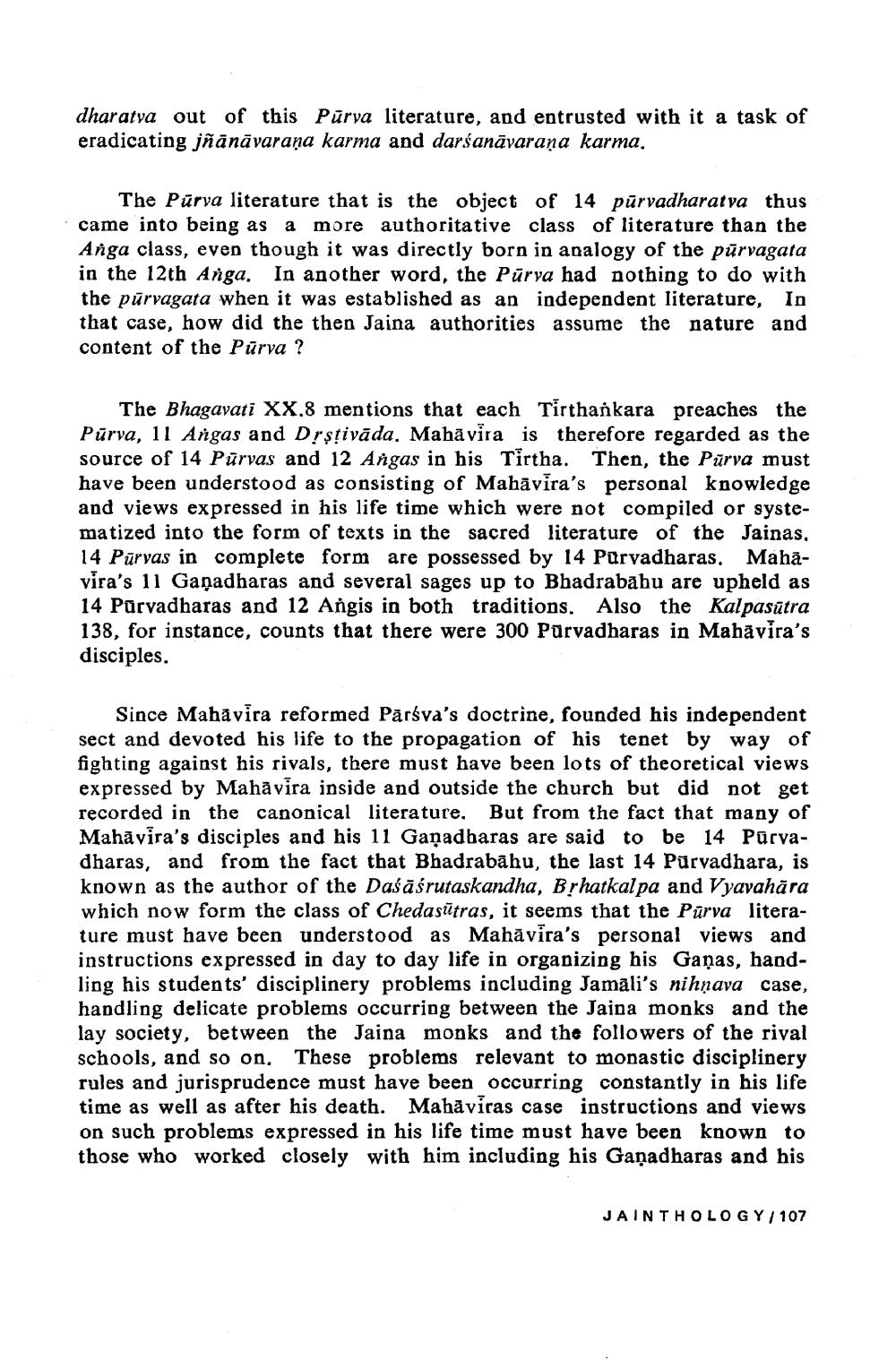________________
dharatva out of this Pūrva literature, and entrusted with it a task of eradicating jñānāvaraṇa karma and darśanāvarana karma.
The Pūrva literature that is the object of 14 pūrvadharatva thus came into being as a more authoritative class of literature than the Anga class, even though it was directly born in analogy of the pūrvagata in the 12th Anga. In another word, the Pūrva had nothing to do with the pūrvagata when it was established as an independent literature, In that case, how did the then Jaina authorities assume the nature and content of the Pūrva ?
The Bhagavati XX.8 mentions that each Tirthankara preaches the Pūrva, 11 Angas and Drşțivāda. Mahā vira is therefore regarded as the source of 14 Pürvas and 12 Angas in his Tirtha. Then, the Pūrva must have been understood as consisting of Mahāvira's personal knowledge and views expressed in his life time which were not compiled or systematized into the form of texts in the sacred literature of the Jainas, 14 Pūrvas in complete form are possessed by 14 Purvadharas. Mahavira's 11 Ganadharas and several sages up to Bhadrababu are upheld as 14 Pürvadharas and 12 Angis in both traditions. Also the Kalpasūtra 138, for instance, counts that there were 300 Purvadharas in Mahavira's disciples.
Since Mahavira reformed Pārsva's doctrine, founded his independent sect and devoted his life to the propagation of his tenet by way of fighting against his rivals, there must have been lots of theoretical views expressed by Mahavira inside and outside the church but did not get recorded in the canonical literature. But from the fact that many of Mahāvira's disciples and his 11 Ganadbaras are said to be 14 Pūrvadharas, and from the fact that Bhadrabāhu, the last 14 Pürvadhara, is known as the author of the Daśāśrutaskandha, Brhatkal pa and Vyavahāra which now form the class of Chedasūtras, it seems that the Pūrva literature must have been understood as Mahăvira's personal views and instructions expressed in day to day life in organizing his Gaņas, handling his students' disciplinery problems including Jamali's nihnava case, handling delicate problems occurring between the Jaina monks and the lay society, between the Jaina monks and the followers of the rival schools, and so on. These problems relevant to monastic disciplinery rules and jurisprudence must have been occurring constantly in his life time as well as after his death. Mahăviras case instructions and views on such problems expressed in his life time must have been known to those who worked closely with him including his Gañadharas and his
JAINTHOLOGY/ 107




